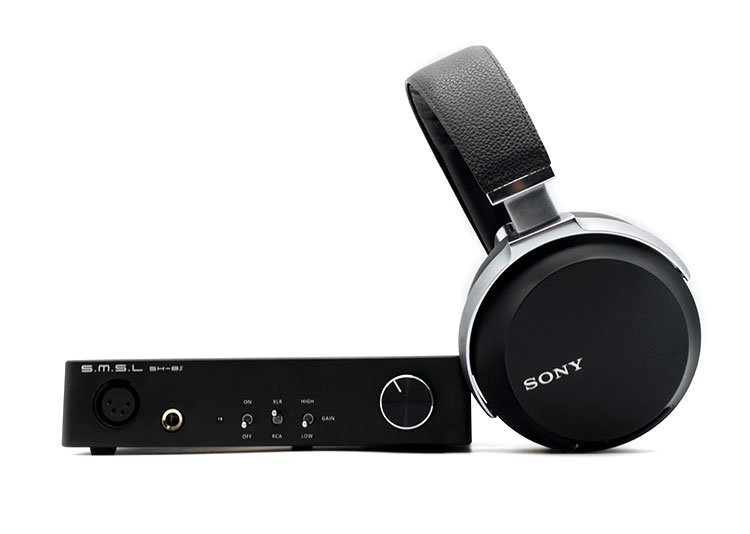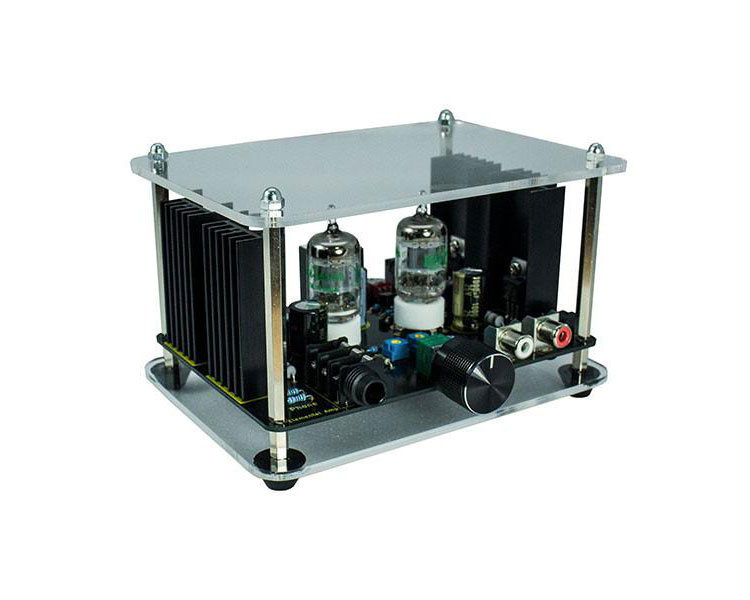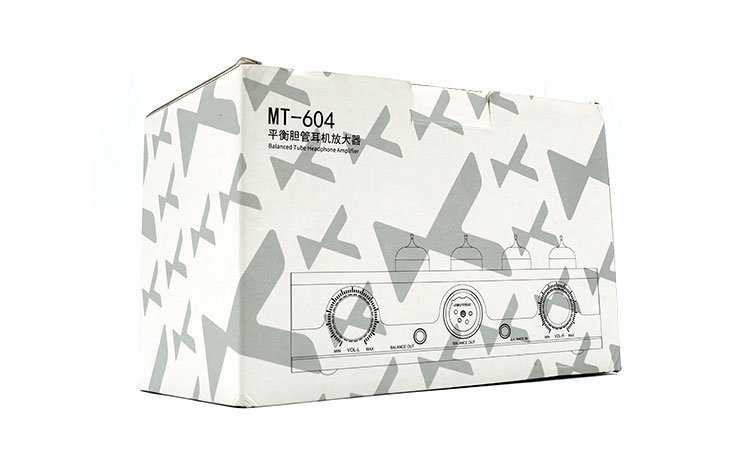Synergy
Power
The MT-604 is rated at 2W into 32Ω, and that is typically more than enough for most headphones. And the specs sheet on the MT-604 doesn’t lie, since it can easily drive my Audio Technica ADX-5000, which has an impedance of 420Ω, while still supplying enough current for my planar magnetic headphones like the Hifiman Ananda.
DAC Pairing
With the MT-604 requiring balanced inputs, DACs at around its price point with balanced outputs are not that easy to come by. Luckily, I have the Khadas Tone 2 Pro to test the pairing.
When paired with the generally neutral Khadas Tone2 Pro, the MT-604’s warmer tonal balance shone through. However, with the limits in the dynamic range found with the Tone2 Pro, I found the MT-604 to stay on the more sluggish side of things.
I then tried moving on SMSL’s SU-9, which is a DAC that can also act as a pre-amp. This allows me to set the volume at the MT-604 at halfway, and then control the volume using the SU-9’s volume knob. Aside from the added convenience of a single volume knob, this pairing allows the MT-604’s strength to shine through.
Where the MT-604’s warmer tonal balance isn’t held back by any lack in dynamic range. This allows the MT-604 to create an impactful bass response while creating a natural sense of attack and decay.
With this pairing, the SU-9’s drier vocal presentation is accentuated with a touch of euphony to create a sweeter midrange presentation. Finally, the treble is smoothed over, to allow the pair to have a smooth but present treble response.
Headphone Pairing
When I was picking headphones to pair with the MT-604 and the SU-9, I first thought that the Hifiman Ananda would make a great pair with them. I thought that the warmer tonal balance would allow the Ananda to have a more impactful bass response. However, this pairing proved to be too slow to have an overall natural bass response.
I then swapped in my ever-reliable Sennheiser HD600, and I believe this pairing turned out to be an enjoyable experience. Doubling down on the euphonic midrange presentation, and the warmer tonal shift relieved some of the perceived roll-off on the HD600.
Also, the holographic presentation created by the MT-604 makes a great complement to the accurate imaging presentation of the HD600. This pairing creates an overall balanced and musical presentation while having an expansive and fairly accurate soundstage presentation.
Select Comparisons
SMSL SH-8s
Technical
The SH-8s serves as the debut for SMSL’s Precision Linear Feedback Circuit(PLFC), which boasts of diminishingly low THD numbers while having substantial power ratings with 3W into 32Ω. An approach that is the polar opposite of what xDuoo has done. However, both amplifiers have somewhat similar power numbers where the SH-8s produces 1 watt more into 32Ω.
While the power numbers end up producing practically the same results, where both amplifiers easily provided enough power to run most of my headphones. However, the SH-8s provides more flexibility since it allows for both single-ended input and output.
Design
Both amplifiers are on the simpler side of things, where both of them don’t have any fancy LCDs, and controls are done using volume knobs and switches. While the footprint of the SH-8s is much larger on my desktop, the power supply is already integrated inside the aluminum chassis, so it can end up being more compact in terms of the overall space that it takes up.
While both amplifiers use aluminum chassis, the SH-8s makes less use of the aluminum chassis, since it doesn’t heat up as much. The finish on the SH-8s is more subdued though since the colors are just plain black with silver accents from the knob and the switches.
At the rear, the SH-8s has some extra inputs, since it allows for both single-ended and balanced inputs. So overall the MT-604 is a much simpler device that can only run as a balanced amplifier.
Performance
The SH-8s takes on a cooler approach to the overall presentation, while still retaining a good amount of detail retrieval. The sub-bass is not particularly rolled off though, and there is weight and heft in the sub-bass and the mid-bass. However, the bass is presented with a more blunted and drier quality overall.
The vocal presentation on the other hand brings the vocalists forward in the same way, however, the SH-8s gives vocalists a brighter and edgier tonal shift. Instruments also take on a similar brighter harmonic balance, where guitars and pianos are brighter overall.
With the more elevated treble response, the SH-8s reveals more details in the treble range. This gives the treble instruments more edge and bite while being more honest about its treble presentation.
The soundstage formed by both amplifiers is equally expansive, with the SH-8s having an edge in terms of how wide the overall soundstage feels.
Despite both amplifiers creating a relatively accurate imaging presentation, where the images are formed in the proper places, the images formed with the SH-8s take on a much flatter consistency. The depth is also not as realistic, since the spacing between the images seems flatter on the SH-8s.
Elemental Watson II
Technical
When looking at these 2 amplifiers, they seem to have a lot of similarities, where both amplifiers have the same output power ratings at 2W into 32Ω. Also, both amplifiers are run in class A and have a tube pre-amp stage.
However, the big difference is that the Watson II only has 2 GE 5654W tubes instead of 4 6J1’s. Also, the Watson is limited to just a single-ended operation with just 1 input and 1 output.
Design
Looking at the 2 amplifiers, my initial thoughts were that both amplifiers strive for simplicity. However, the Watson takes it to a whole new level, throwing out all possible extra conveniences including an aluminum case. The Watson ends up being more bare-bones, literally, since there is no case to speak of.
Both amplifiers run on class A, so they dissipate a good amount of heat, so it turns out that the choice of having no case for the Watson may not be solely attributed to cost reduction. However, the aluminum case on the MT-604 makes me more comfortable overall, even if I’ve worked on circuits before as an engineer.
The inputs and outputs of both devices are pretty similar, except that the Watson only has single-ended inputs and outputs. They are also similar in that the Watson also provides for input in front of the device for convenience, but take note that the inputs on both devices are electrically connected.
Aside from the inputs and outputs, both amplifiers just have volume knobs, but the Watson only has 1 volume knob which ends up being more convenient.
Performance
I was expecting a lot of similarities here since both amplifiers basically use the same technologies. However, there is a striking difference in that the Watson ends up being more neutral overall. There isn’t much of a bass hump or even midrange emphasis. The treble isn’t even particularly rolled off.
However, the 2 amplifiers are very similar in other respects. The first thing that I noticed is that the midrange euphony is equally present with both amplifiers. There are harmonic overtones that give both amplifiers a more full vocal range. Instrument timbre is also equally euphonic while being generally glossed over.
Soundstage is also very similar, where the imaging presentation gives a larger more holographic imaging presentation. Also, the imaging is generally intimate, but the Watson ends up creating more overlapping images within the soundstage. The width of the soundstage is also similarly wide.
When it comes to dynamics, they are still quite similar, but the Watson ends up being less weighty due to the more neutral tonal balance. Dynamic crescendos are easily conveyed by both amplifiers, and they also convey a louder perceived volume for gentler passages, however, the Watson’s dynamic range is notably more compressed comparatively.
Our Verdict
xDuoo has been known for producing high-performing tube amplifiers at reasonable prices, and the MT-604 continues in that tradition. It offers a fully balanced class-A tube amplifier without the option for single-ended for well below $200, which is something almost unheard of.
The MT-604 undoubtedly offers a great value proposition by introducing a warm overall tonal balance and a holographic soundstage presentation. All of which can be achieved as long as you can accurately adjust the volume knobs to achieve a good balance between the left and right channels.
Technical Specifications
- Power Supply DC12V/2A
- Output Power 2000mW (1KHz, 32Ωload)
- Dynamic Range 85dBA (32Ohm)
- Frequency Response 10Hz-60KHz (±0.5dB)
- Suitable Headphone Impedance 16Ω~600Ω
- Gain +15dB
- Size 7*10*6cm
- Weight 5kg
- S/N 115dB
- THD+N ≤0.01% (1KHz, 32Ωload)





